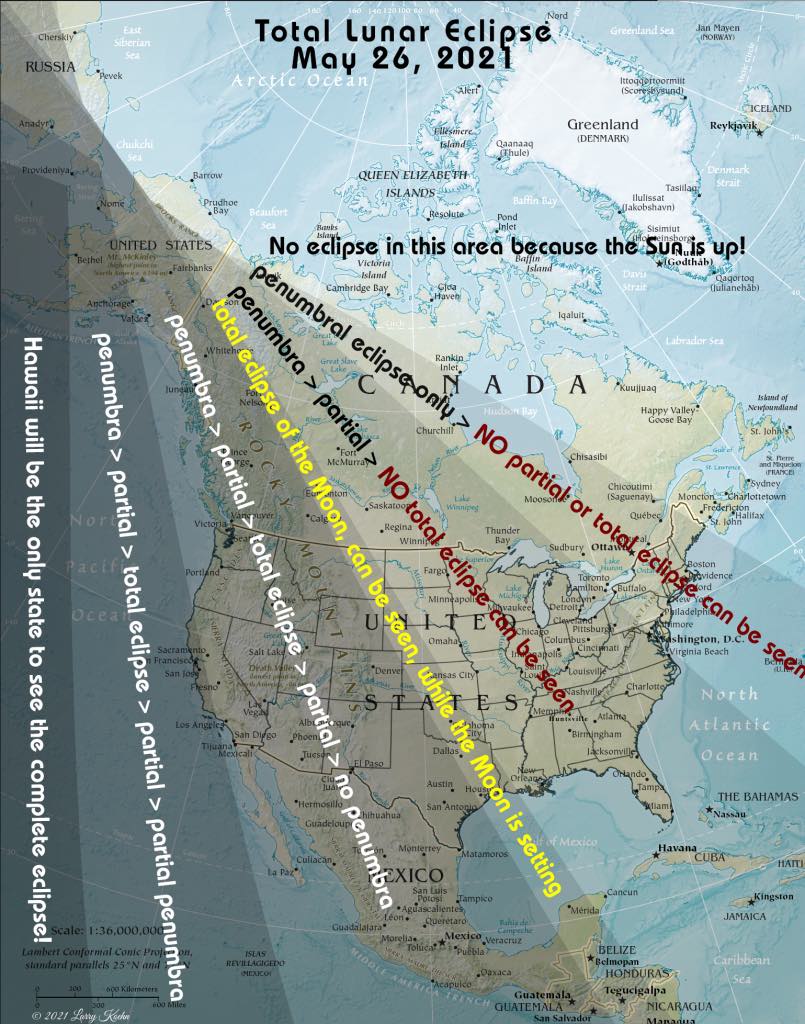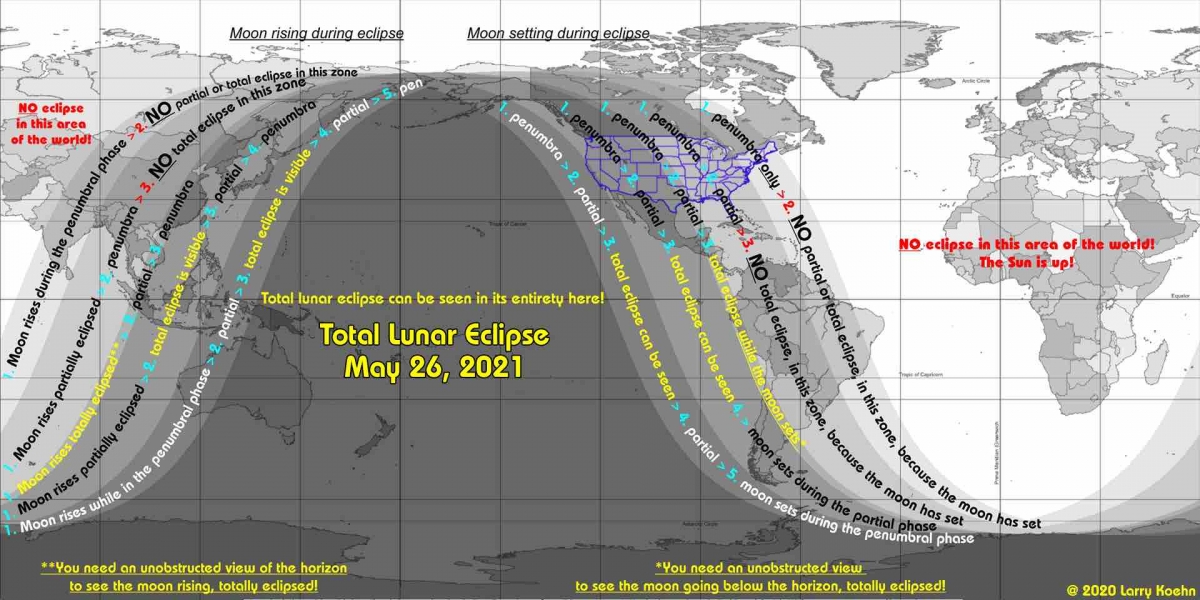Sci. Nerd Friday; Lunar Eclipse / Space Junk on Seismograph edition
Forums:
2 cool things to share with you science nerd zoners out there;
First, a lunar eclipse will occur on May 26, best in the west;


- Log in to post comments
2 cool things to share with you science nerd zoners out there;
First, a lunar eclipse will occur on May 26, best in the west;


Top of Page Bottom of Page PermalinkFull Name: Druba
Next, an excellent read on
Next, an excellent read on how a mysterious Seismograph event could be explained by space junk that landed in Eastern Washington in March;
https://pnsn.org/blog/2021/05/20/a-space-junk-mystery-maybe-explained?ut...(Seismo%20Blog%20Posts%20Feed)&fbclid=IwAR3C9552NyHK4IIjfDisEb7572d82rktVICtenKGnS_d7MJyDsfEHgAcbTU
<<
A Space Junk Mystery - Maybe Explained
May 20, 2021
by Steve Malone
There have recently been a number of news reports, with dramatic predictions, of bits of human-launched debris returning to earth. Besides the Chinese booster rocket return (into the Indian Ocean) there was the streak of lights over Washington back in late March followed by parts of SpaceX Falcon rocket being found in a field near Beverly in eastern Washington.
Seattle Times story about lights in the sky
Seattle Times story about finding rocket parts in eastern Washington
Such things often attract the attention of seismologists, particularly those of us with a bent toward exotic (non-earthquake) sources. I finally got around to looking at seismograms in the evening (local time) of March 25 and WOW!! There were lots of strong seismic signals on many of the PNSN seismograms for stations in northwestern Oregon and southern Washington. I puzzled over these seismograms for awhile and found interesting signals on no fewer than 123 stations, and I have not exhausted all possibilities. However, I am still confused.
I can now say that I have a few wild ideas about what this sequence of signals means. They are certainly associated with the widely reported fireballs seen at roughly the same time. Their arrival patterns do not agree with any simple model of what took place (that I can come up with). I outline some of my observations below followed by some wild arm-waving guesses to explain them.>>
<<
What is clearly different between the space shuttle generated arrivals and those of the recent space junk is the speed along the line of earliest arrivals. For the space shuttle it takes over 60 seconds from the earliest arrival to the latest along this ~400 km line, implying an apparent horizontal velocity of almost 7 km/sec. This agrees very closely with the speed as reported by the Johnson Space Flight Center, of 7.2 km/sec as it passed over Washington. The very obvious hyperbolic pattern of wavefronts is exactly what is expected for the shock wave from a single supersonic object traveling in a near horizontal trajectory.
In our space junk case, having all arrivals within 10 seconds along a line of similar length (A - A’ in the multicolored figure) implies a minimum velocity of 40 km/sec, much faster than is reasonable. I puzzled over this problem for quite a bit until I mentioned it to my wife, Linda (not a seismologist nor space cadet) who said that it seemed to her it must be a bunch of junk strung out along a line entering the atmosphere at about the same time. This seemed a cop-out to me at first, but the more I thought about it the more this seemed reasonable. It is clear from the seismograms that the seismic signals are complex, more so than for a single sonic boom source. From the earliest arrival at a single station some signals can be seen for almost a minute later (though the high amplitude part doesn’t last much more than 10-20 seconds). The earliest arrivals are near Mount Adams, with later arrivals both west and east of this one in a complex pattern.
OK, so if it is a line source entering the atmosphere at roughly the same time it could explain the complexity of the seismograms and their almost simultaneous arrivals along the line A-A’. It would also explain the much slower arrivals perpendicular to this line, for example along line B - B’ where the apparent velocity is more like 0.4 km/sec (240 seconds to go about 100 km). This is not much faster than the speed of sound in air of 0.32 km/sec, which would be very appropriate for a source in the upper atmosphere.>>
Top of Page Bottom of Page PermalinkFull Name: An organ grinder’s tune
looks like a good setlist
looks like a good setlist
Top of Page Bottom of Page PermalinkFull Name: billionyearoldcarbon
cool stuff, thanks
cool stuff, thanks
Top of Page Bottom of Page PermalinkFull Name: Druba
Bump since we're getting
Bump since we're getting close!
Top of Page Bottom of Page PermalinkFull Name: MarkD
So, on the west coast it will
So, on the west coast it will be around 4AM Wed?
Top of Page Bottom of Page PermalinkFull Name: Mice elf
Visions Under The Moon >
Visions Under The Moon > Penumbra
https://www.youtube.com/watch?v=KlxYvA1N_uc
Top of Page Bottom of Page PermalinkFull Name: Druba
In Eugene, OR, the penumbra
In Eugene, OR, the penumbra eclipse starts around 1:47 AM local time
Partial Eclipse at 2:44 AM
Full Eclipse begins at 4:11 AM
Max Eclipse at 4:18 AM
Full Eclipse Ends at 4:25 AM
Partial Eclipse Ends at 5:52 Am (but the moon will be below the Horizon by then)
Top of Page Bottom of Page PermalinkFull Name: MarkD
Thanks Noodler.
Thanks Noodler.